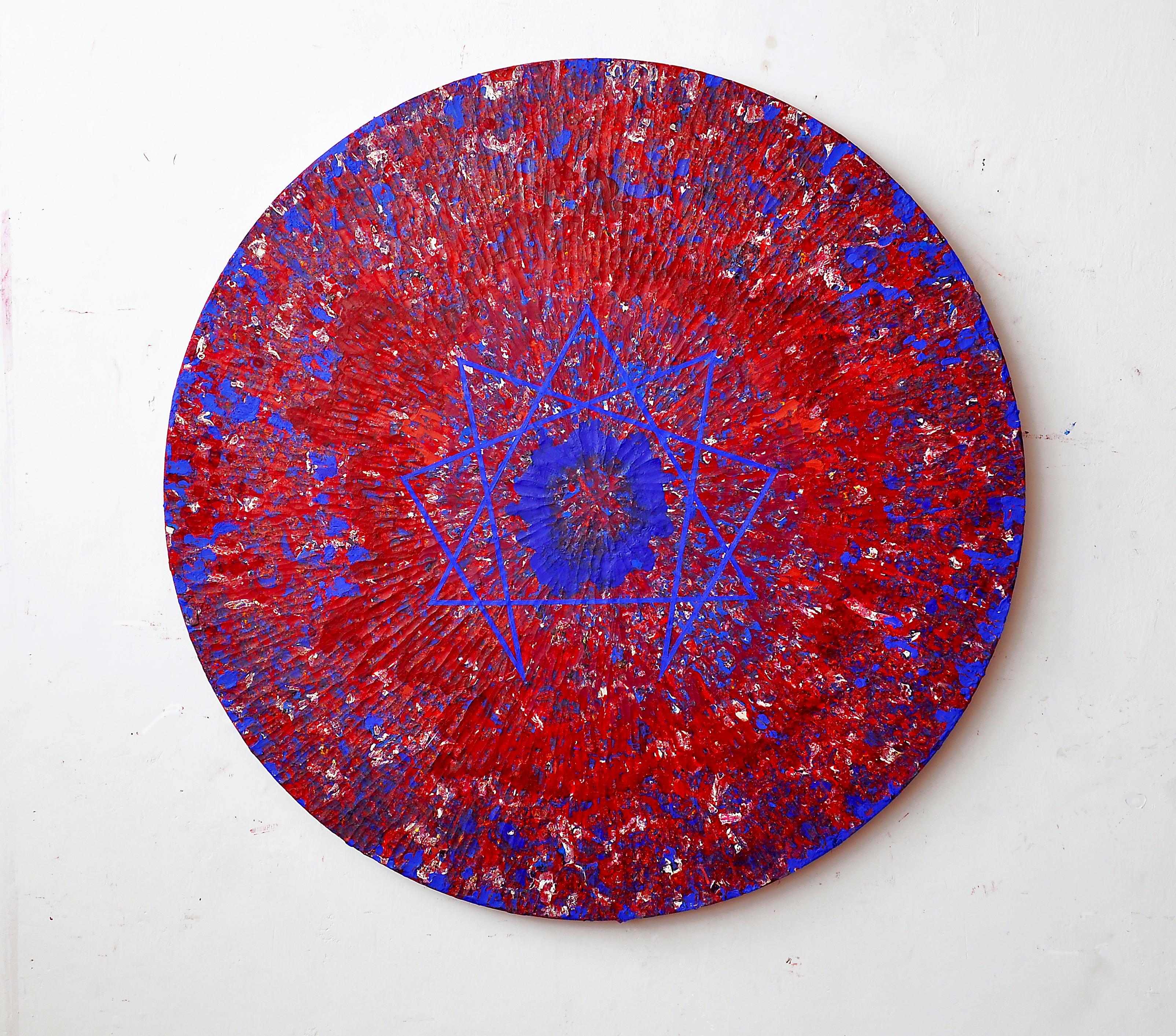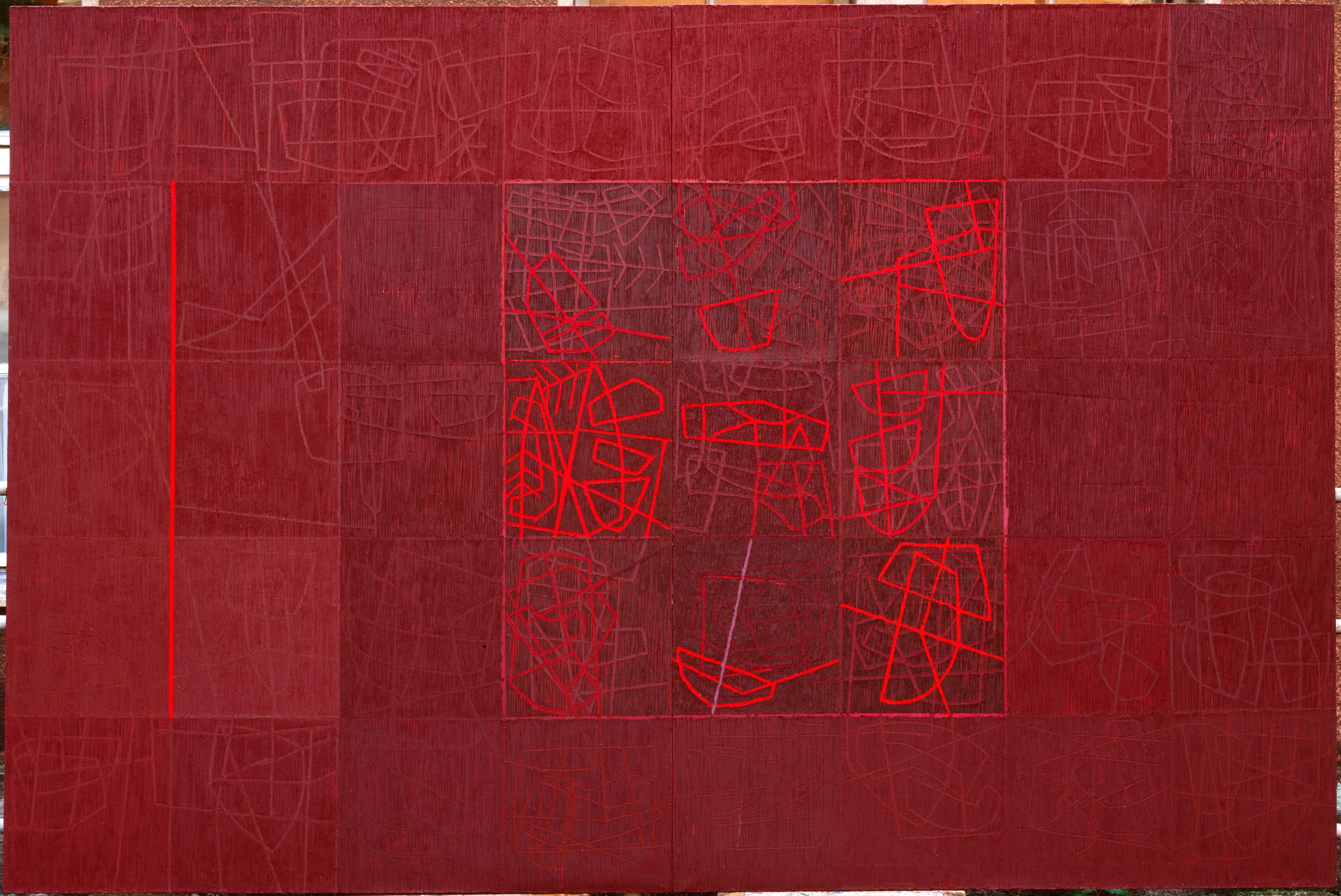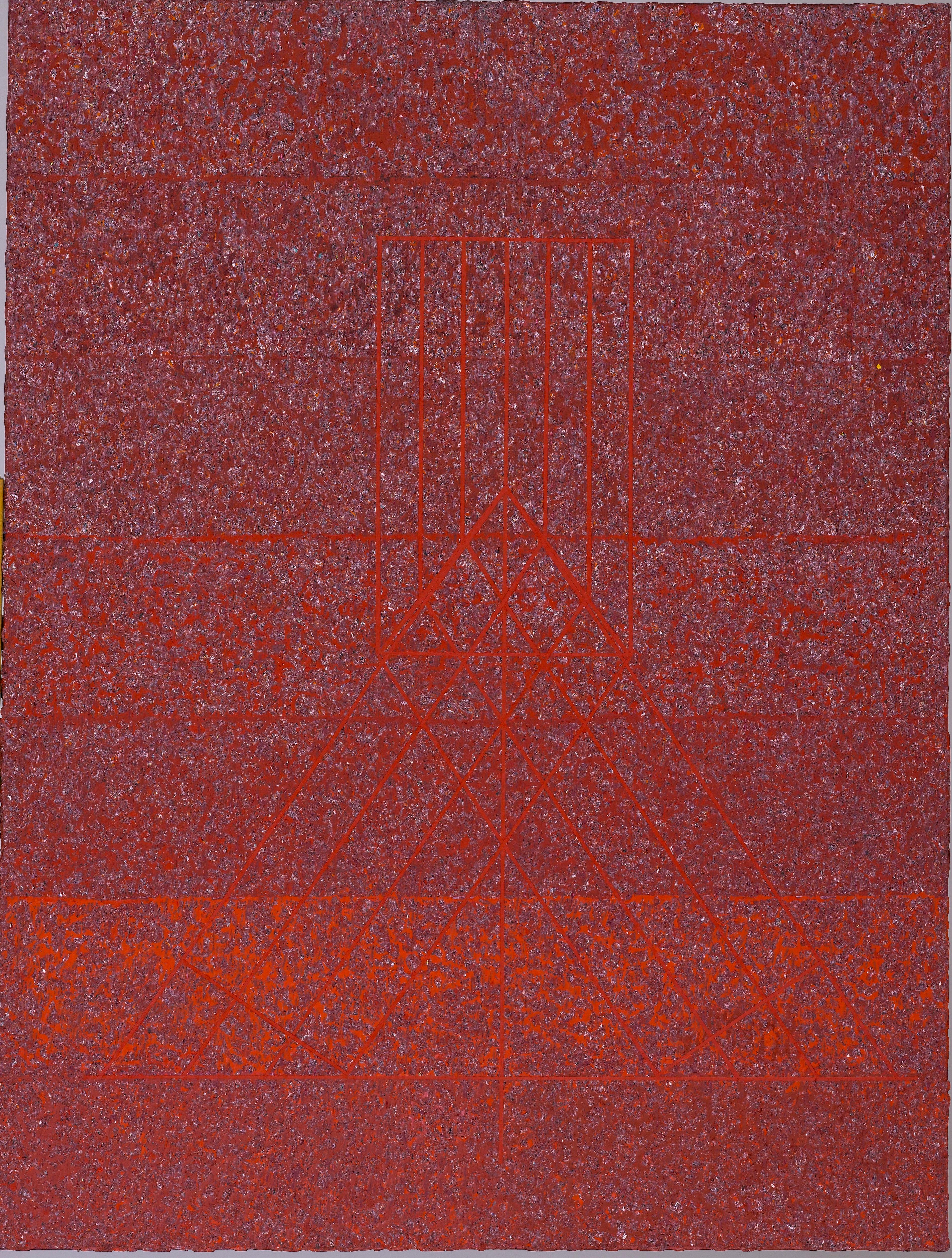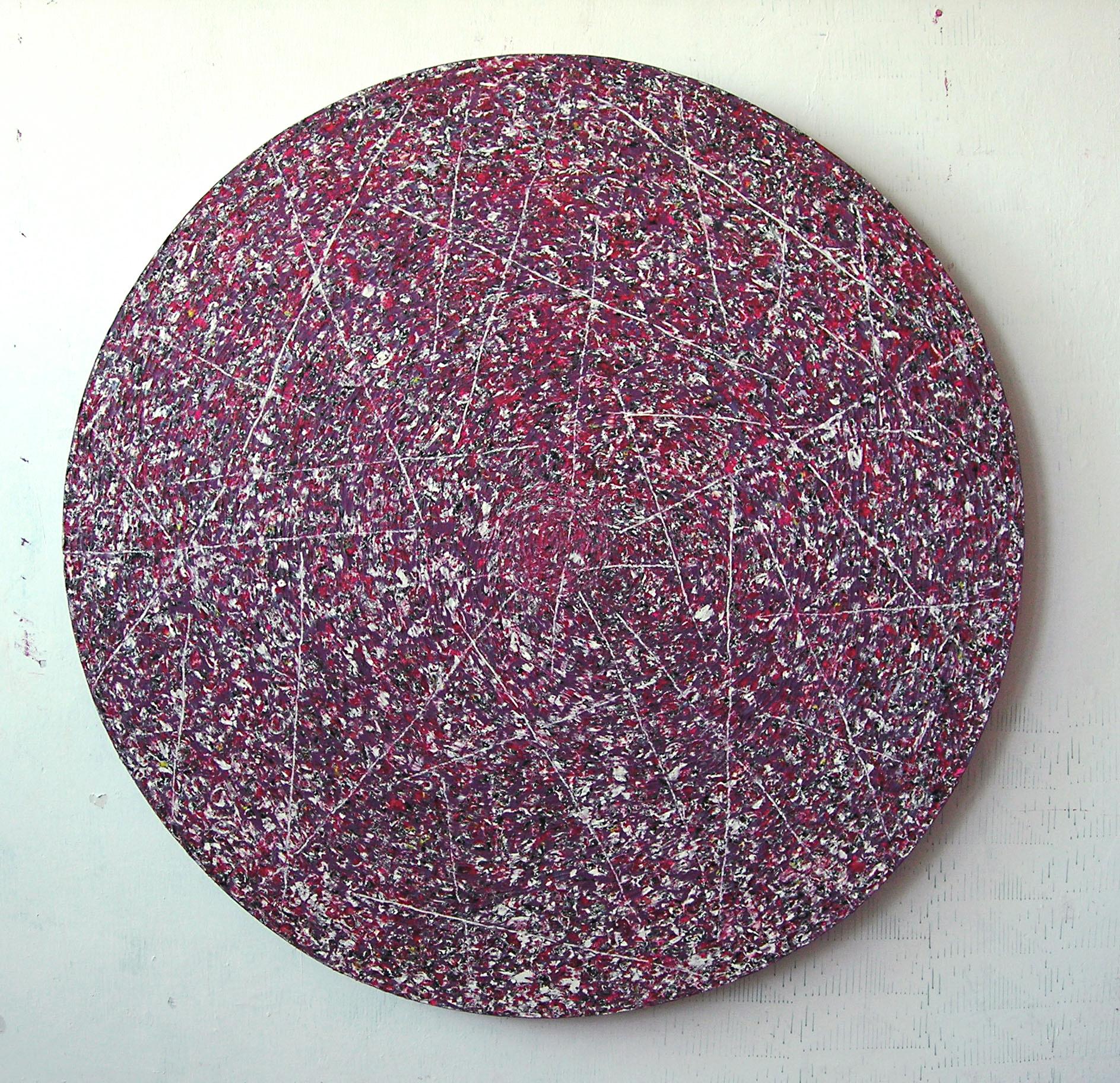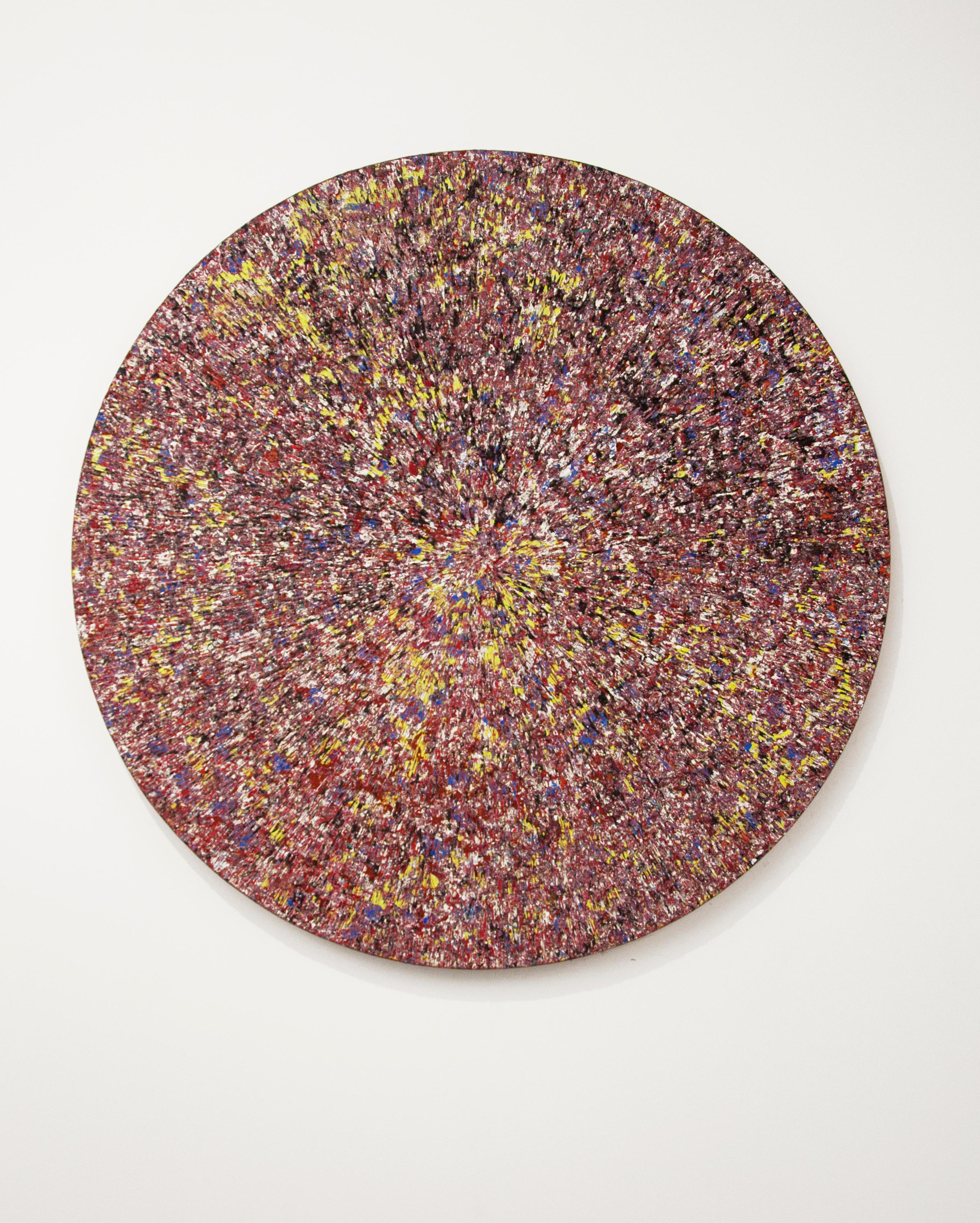Items Similar to Cauda Pavonis, Synergic - Conceptual Encaustic, Oil Pigments, Canvas On Wood
Want more images or videos?
Request additional images or videos from the seller
1 of 7
Krzysztof GliszczyńskiCauda Pavonis, Synergic - Conceptual Encaustic, Oil Pigments, Canvas On Wood2017
2017
About the Item
"Cauda Pavonis" synergic painting: pigments, oil, encaustic on canvas stretched on wood, ∅ 80 cm, 2017.
Krzysztof Gliszczyński is Professor for painting on Academy of fine arts Gdansk.
Krzysztof Gliszczyński born in Miastko in 1962. Graduated from the Gdańsk Academy of Fine Arts in 1987 in the studio of Prof. Kazimierz Ostrowski. Between 1995 and 2002 founder and co-manager of Koło Gallery in Gdańsk. lnitiator of the Kazimierz Ostrowski Award, con-ferred by the Union of Polish Artists and Designers (ZPAP), Gdańsk Chapter. Dean of the Painting Faculty of the Gdańsk Academy of Fine Arts in the years 2008-2012. Vice Rector for Development and Cooperation of the Gdańsk Academy of Fine Arts in the years 2012-2016. Obtained a professorship in 2011. Currently head of the Third Painting Studio of the Painting Faculty of the Gdańsk Academy of Fine Arts. He has taken part in a few dozen exhibitions in Poland and abroad. He has received countless prizes and awards for his artistic work. He is active in the field of painting, drawing, objects, and video.
Artist Statement:
In the 1990s I started collecting flakes of paint – leftovers from my work. I would put fresh ones in wooden formworks, dried ones in glass containers. They constituted layers of investigations into the field of painting, enclosed in dated and numbered cuboids measuring 47 × 10.5 × 10.5 cm. I called those objects Urns. In 2016, I displayed them at an exhibition, moulding a single object out of all the Urns. The Urns inspired me to redefine the status of my work as a painter. In order to do it, I performed a daunting task of placing the layers of paint not in an urn, but on a canvas, pressing each fresh bit of paint with my thumb. In the cycle of paintings Autoportret a’retour, the matter was transferred from painting to painting, expanding the area of each consecutive one. Together, the bits, the residua of paint, kept alive the memory of the previous works. It was a stage of the atomization of the painting matter and its alienation from the traditional concepts and aesthetic relations. Thus, the cycle of synergic paintings was created, as I called them, guided by the feeling evoked in me by the mutually intensifying flakes of paint. The final aesthetic result of the refining of the digested matter was a consequence of the automatism of the process of layering, thumb-pressing, and scraping off again. Just like in an archaeological excavation, attempts are made to unite and retrieve that which has been lost.
This avant-garde concept consists in transferring into the area of painting of matter, virtually degraded and not belonging to the realm of art. And yet the matter re-enters it, acquiring a new meaning. The matter I created, building up like lava, became my new technique. I called it perpetuum pictura – self-perpetuated painting. Alchemical concepts allowed me to identify the process inherent in the emerging matter, to give it direction and meaning. In a way, I created matter which was introducing me into the pre-symbolic world – a world before form, unnamed. From this painterly magma, ideas sprung up, old theories of colour and the convoluted problem of squaring the circle manifested themselves again. Just like Harriot’s crystal refracted light in 1605, I tried to break up colour in the painting Iosis. Paintings were becoming symptoms, like in the work Pulp fiction, which at that time was a gesture of total fragmentation of matter and of transcending its boundaries, my dialogue with the works of Jackson Pollock and the freedom brought by his art. The painting Geometrica de physiologiam pictura contains a diagram in which I enter four colours that constitute an introduction to protopsychology, alchemical transmutation, and the ancient theory of colour. It this work I managed to present the identification of the essence of human physiology with art. But the essential aspect of my considerations in my most recent paintings is the analysis of abstraction, the study of its significance for the contemporary language of art and the search for the possibilities of creating a new message. For me, abstraction is not an end in itself, catering to the largely predicable expectations of the viewers. To study the boundary between visibility and invisibility, like in the work Unsichtbar, is to ask about the status of the possibilities of the language of abstraction. The moment of fluidity which I am able to attain results from the matter – matter which contains only a memory of the previous works, and yet becomes the reason for seeking balance between the deepest layers of the psyche, which are never static, but forever subject to changes. Its counterweight is geometry, which represents rationality and has the ability to organize and define artistic form, like in the work Memory. By going back to the works of El Greco and his painting Toledo, I was able to once more study the force of the idea of light, which gave the painting its form and the apocalyptic atmosphere contained therein. El Greco, rediscovered by Paul Cézanne, made an enormous contribution to the creation of the foundations of modern painting. El Greco’s idea inspired me to paint Toledo.
In the work Anamnesis, I tackle the idea of memory and its opposite, oblivion, which, in the creative process, allows to deconstruct the rationality of memory. History of the Painter from Borowy Młyn is an installation which speaks of the process of painting, the act of creation, and refers to the story of my father, a house painter, and his traumatic experiences after being separated from his family by the Nazis in 1944. Rolling scrolls from strips of canvases became a symbolic act of dressing a wound. The scrolls were rolled onto a metal frame up until the moment when the burden became too much to bear.
- Creator:Krzysztof Gliszczyński (1962, Polish)
- Creation Year:2017
- Dimensions:Height: 31.5 in (80 cm)Width: 31.5 in (80 cm)
- Medium:
- Movement & Style:
- Period:
- Condition:
- Gallery Location:Salzburg, AT
- Reference Number:1stDibs: LU103538491102
About the Seller
5.0
Platinum Seller
These expertly vetted sellers are 1stDibs' most experienced sellers and are rated highest by our customers.
Established in 2005
1stDibs seller since 2018
136 sales on 1stDibs
Typical response time: <1 hour
- ShippingRetrieving quote...Ships From: Sopot, Poland
- Return PolicyA return for this item may be initiated within 14 days of delivery.
More From This SellerView All
- Synergy, Synergic Painting - Conceptual Encaustic, Oil Pigments, Canvas On WoodBy Krzysztof GliszczyńskiLocated in Salzburg, AT"Synergy" synergic painting: pigments, oil, encaustic on canvas stretched on wood, ∅ 100 cm, 2015. Krzysztof Gliszczyński is Professor for painting on Academy of fine arts Gdansk. ...Category
2010s Conceptual Abstract Paintings
MaterialsCanvas, Oil, Wood, Encaustic, Pigment
- Caput Mortuum - Conceptual Encaustic Oil Painting, Marble Dust Ash On Canvas XXLBy Krzysztof GliszczyńskiLocated in Salzburg, ATOverall Size: Height 200cm x Width 300cm ( The painting consists of 2 parts, one part: 200x150cm ) Overall Size: Height 78,7402 Inch x Width 118,11 Inch ( The painting consists o...Category
1990s Conceptual Abstract Paintings
MaterialsMarble
- Iosis, Synergic Painting - Conceptual Encaustic Painting On Canvas XL FormatBy Krzysztof GliszczyńskiLocated in Salzburg, ATKrzysztof Gliszczyński is Professor for painting on Academy of fine arts Gdansk. Krzysztof Gliszczyński born in Miastko in 1962. Graduated from the Gdańsk Academy of Fine Arts in 1...Category
1990s Conceptual Abstract Paintings
MaterialsEncaustic, Pigment, Canvas
- Network - Conceptual Encaustic, Marble Dust, Oil Pigments Painting On CanvasBy Krzysztof GliszczyńskiLocated in Salzburg, ATKrzysztof Gliszczyński is Professor for painting on Academy of fine arts Gdansk. Krzysztof Gliszczyński born in Miastko in 1962. Graduated from the Gdańsk Academy of Fine Arts in 1...Category
2010s Conceptual Abstract Paintings
MaterialsCanvas, Encaustic, Pigment
- Vanishing Point, Synergic Painting - Conceptual Encaustic, Oil Pigments On WoodBy Krzysztof GliszczyńskiLocated in Salzburg, ATKrzysztof Gliszczyński is Professor for painting on Academy of fine arts Gdansk. Krzysztof Gliszczyński born in Miastko in 1962. Graduated fro...Category
Early 2000s Conceptual Abstract Paintings
MaterialsWood, Encaustic, Pigment
- The Unobvious, Synergic Painting - Conceptual Encaustic, Oil Pigments On WoodBy Krzysztof GliszczyńskiLocated in Salzburg, ATKrzysztof Gliszczyński is Professor for painting on Academy of fine arts Gdansk. Krzysztof Gliszczyński born in Miastko in 1962. Graduated from the Gdańsk Academy of Fine Arts in 1...Category
Early 2000s Conceptual Abstract Paintings
MaterialsWood, Encaustic, Pigment
You May Also Like
- Àgbájo Owó L’Afií S’òya (Togetherness Brings About Progress)Located in Ibadan, Oyo"Àgbájo Owó L’Afií S’òya (Togetherness Brings About Progress)" is a striking artwork created by the Nigerian artist Wale Ajayi. This piece embodies the rich...Category
21st Century and Contemporary Conceptual Figurative Paintings
MaterialsCanvas, Oil
- Post Conceptual Digital Artist Oil Painting Screenprint Diptych Joseph NechvatalLocated in Surfside, FLJoseph Nechvatal The Oedipal God of Oil Paint and Destruction, Diptych Oil and screenprint on two canvases, 1985, both signed 'Joseph Nechvatal', titl...Category
1980s Conceptual Abstract Paintings
MaterialsCanvas, Oil, Screen
- HideBy Niki SingletonLocated in Los Angeles, CAHide, 2015 12” X 9” Oil on found wine box $1400 unframed A painter, sculptor, and installation artist, Niki Singleton draws on both popular culture and mythology in order to cr...Category
21st Century and Contemporary Conceptual Abstract Paintings
MaterialsOil, Paper
- GloryBy Niki SingletonLocated in Los Angeles, CAGlory, 2015 12” X 9" Oil on paper Framed A painter, sculptor, and installation artist, Niki Singleton draws on both popular culture and mythology in order to create works that...Category
21st Century and Contemporary Conceptual Abstract Paintings
MaterialsOil, Paper
- Winter #2By Chris GwaltneyLocated in Newport Beach, CAAcquired through Peter Black Gallery by present owner. Oil and encaustic on canvas. Balancing between abstraction and figurative, the works of Chris Gwaltney (b. 1953) are evocative...Category
1990s Abstract Impressionist Figurative Paintings
MaterialsEncaustic, Oil, Canvas
- Car and Truck Crashing with Random Cosmic Laser BeamBy Joe CurrieLocated in New York, NYAcrylic on Canvas. Energy. Vibrant colors. Impactful portrayal of a crash with science fiction infusion. About the Artist: "Growing up in England during the 80s, the influence and love of American sub cultures through TV, and being surrounded by large non-spaces of US air bases around East Anglia, gave me a slightly odd and romantic view of America. I finished the Masters Degree bronze-casting course at the Royal College of Art in 1999 and have pursued my passion for Art ever since. I have built up a body of work that follows the theme of a journey into abstraction, inspired by Robert Smithson, Donald Judd, Fiona Banner, Cornelia Parker...Category
2010s Conceptual Figurative Paintings
MaterialsAcrylic
